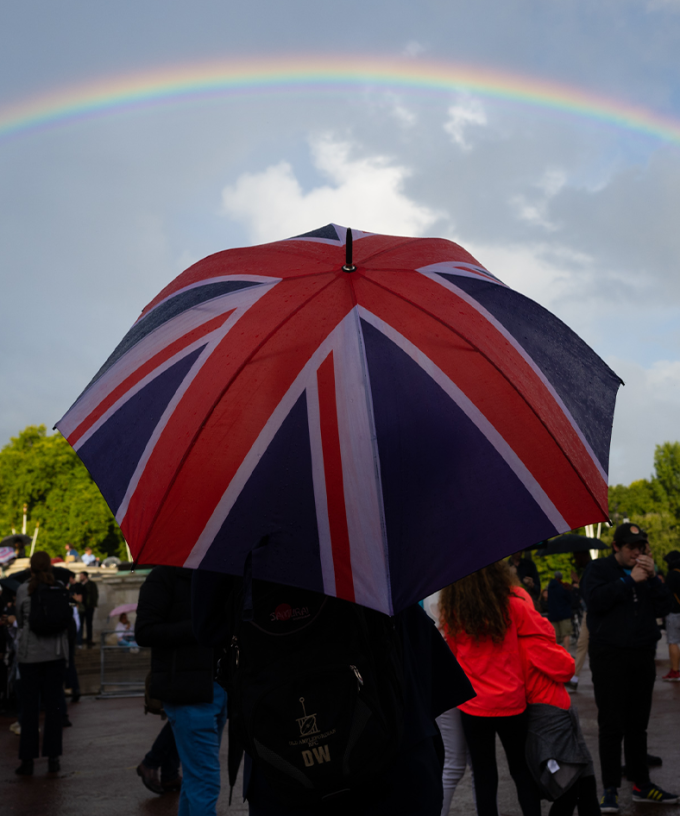This morning, Australia woke to the news that Queen Elizabeth II had passed away.
The code phrase of her death, known as ‘London Bridge is down’, is relayed to the British prime minister and government officials before a well-oiled set of protocols are set in motion.
Here’s what we can expect in the following days:
D-Day
D-Day is the day of Queen Elizabeth II’s death.
Buckingham Palace announced her passing. The Royal Family website was replaced with a simple message confirming her death.
A traditional announcement was placed on the gates of Buckingham Palace as the country goes into a state of mourning and flags have been lowered to half-mast.
The King, the Queen’s eldest son Charles, issued an official statement with Buckingham Palace letterhead 30 minutes after the palace announced his mother’s death.
Like his late mother Queen Elizabeth II, he chose to keep his Christian name to become King Charles III.
The statement from His Majesty the King said: “We mourn profoundly the passing of a cherished sovereign and a much-loved mother. I know her loss will be deeply felt throughout the country, the realms and the Commonwealth, and by countless people around the world.”
A public service will be held at St Paul’s Cathedral in the evening. No members of the royal family will attend.
The King will be visited by the Prime Minister at some point on this day.
Operation Unicorn is now also in motion.
This operation contains plans for if the Queen died in Scotland.
Her coffin will leave there two days after her death before being taken to Buckingham Palace, either by The British Royal Train or plane.
In line with royal tradition, D-Day is proceeded with 11 days of ceremony.
D1: Proclamation of the King. The Accession Council – a group formed of all Privy Counsellors, Great Officers of the State, the Lord Mayor and City Civic party, Realm High Commissioners and certain senior civil servants in the event of a new Sovereign succeeding to the throne – will meet for two events at St James’s Palace. The King will join the second event.
D2: The King will meet with the Secretary-General of the Commonwealth and the Dean of Windsor.
D3: The King begins his tour, he will first visit Edinburgh in Scotland and will go to the Palace of Holyrood House for a guard of honour inspection.
D4: The King will make his way to Belfast, in Northern Ireland. He will attend a remembrance service at St Anne’s Cathedral after after visiting Hillsborough Castle.
D5: Lying in state begins. The Imperial State Crown, orb and sceptre and flowers will be placed on the Queen’s coffin. The royal family will hold prayers. At 2.30pm (local time) a gun carriage procession will take the coffin from Buckingham Palace to Westminster Hall at the Palace of Westminster. Once the coffin is at Westminster, a short service will be held by the Archbishop of Canterbury with the royal family in attendance, before they return to Buckingham Palace.
D6: No public events are to take place on this day and the King will not be seen in public.
D7: The King will go to Cardiff, Wales, to attend a remembrance service at Llandaff Cathedral, visit the Senedd and then have an audience with the First Minister at Cardiff Castle. A vigil will be held at Westminster Hall in the evening, attended by members of the royal family.
D8: World leaders, dignitaries and officials are expected to begin arriving.
D9: Funeral arrangements are underway and the royal family are briefed.
D10: A state funeral service is held at Westminster Abbey, triggering an observance of two minutes’ silence in the UK After a final service in St. George’s Chapel at Windsor Castle, she is buried on the castle grounds next to her husband, Prince Philip, who died in April 2021.
D11: National mourning begins. Flags across Britain will be returned to full-mast today, and the national mourning period will begin. The time will be determined by the British Government.







